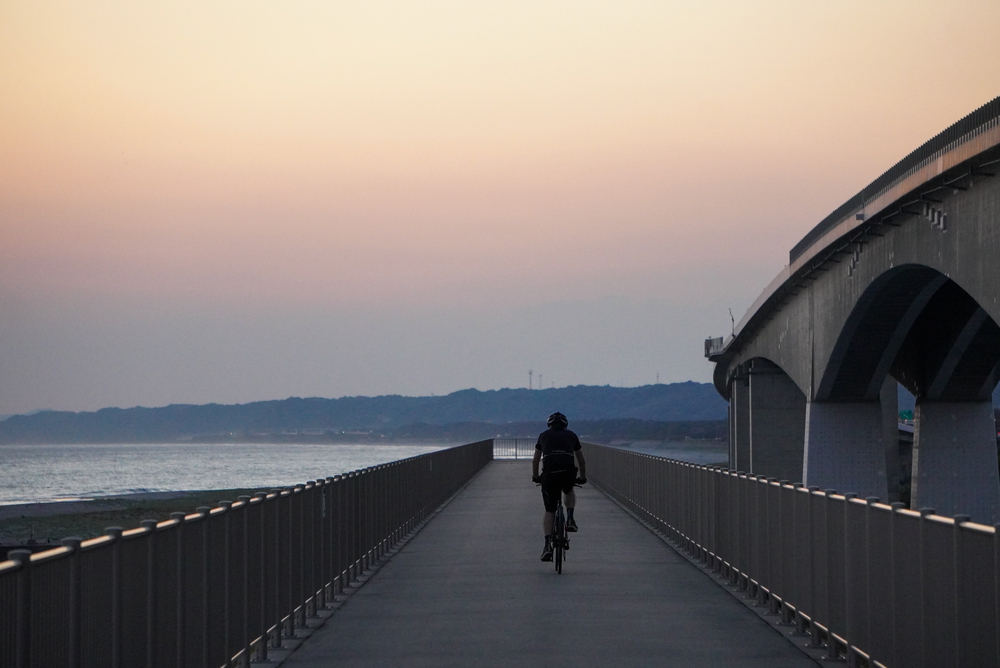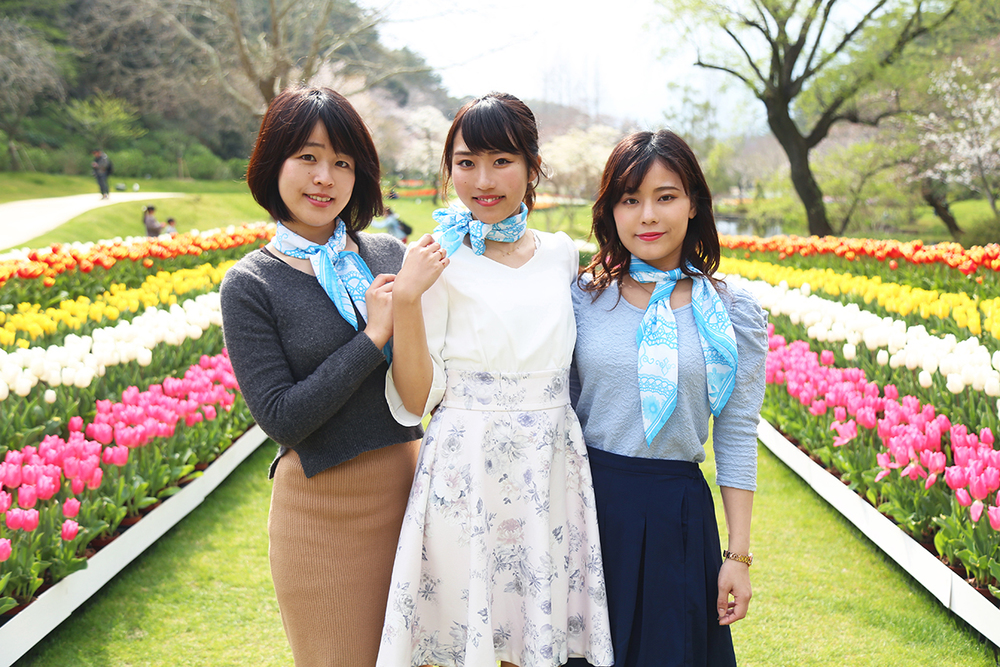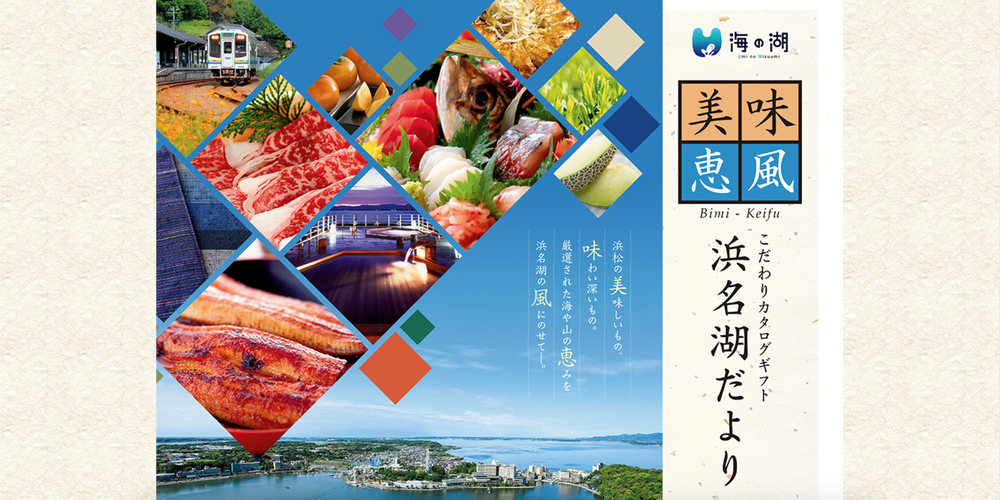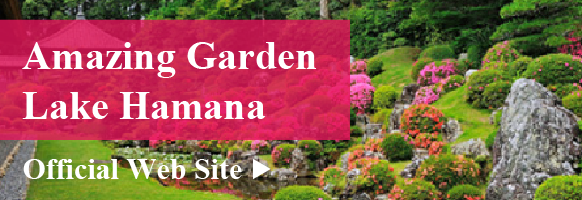Get to Know Hamamatsu
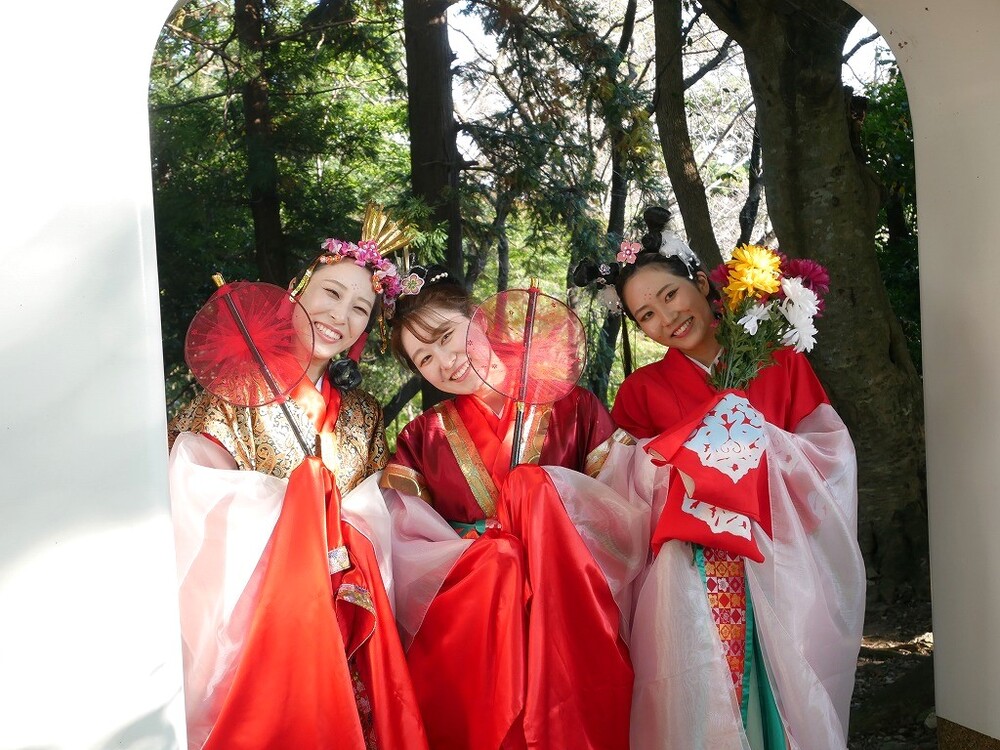
- Watch
Jenne becomes a nobleman in the Nara period! Experience elegant culture at the Hamakita Manyo Festival
Sea Lake HAMANA Jenne makes a special appearance at the Hamakita Manyo Festival, which is held every fall at Manyo Manyou no Mori Park in Hamakita Ward! The three Jenne, who appeared in aristocratic costumes from the Nara period, captivated the audience.
This time, we will show you how they transform into elegant forms, as well as how they take on the challenge of reciting the main theme of the Hamakita Manyo Festival, “Kyokusui Banquet Utage (En),” and Manyo songs.
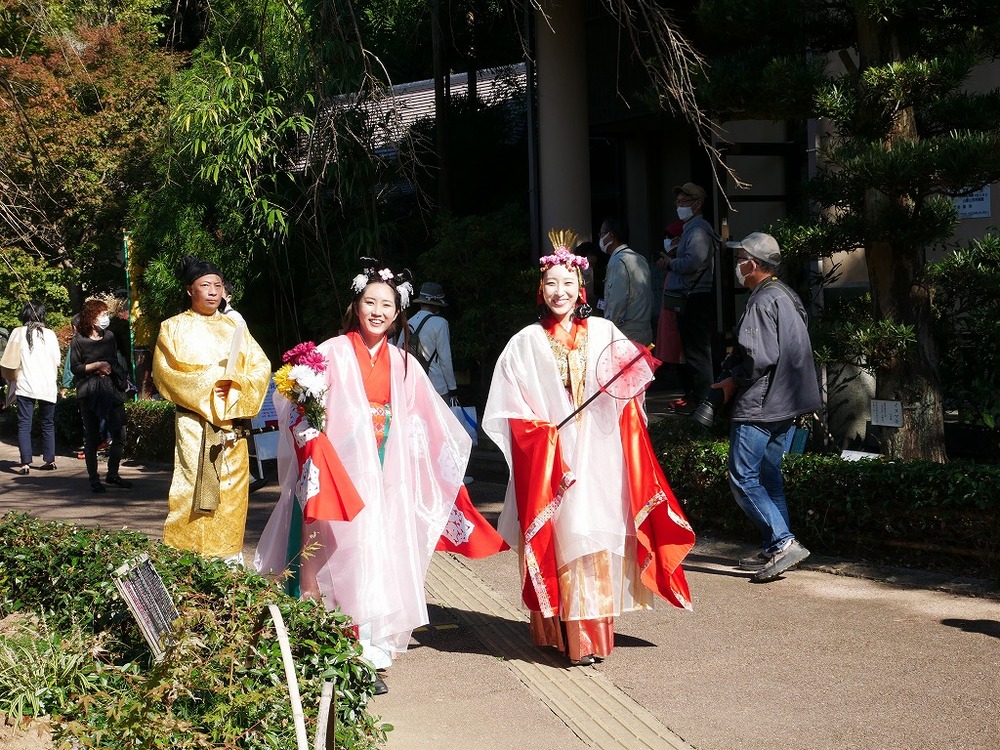
Saya Jenne and Anna Jenne head to the venue. Look forward to the other one.
Don't just look! Manyōnomori Park where you can enjoy various experiences
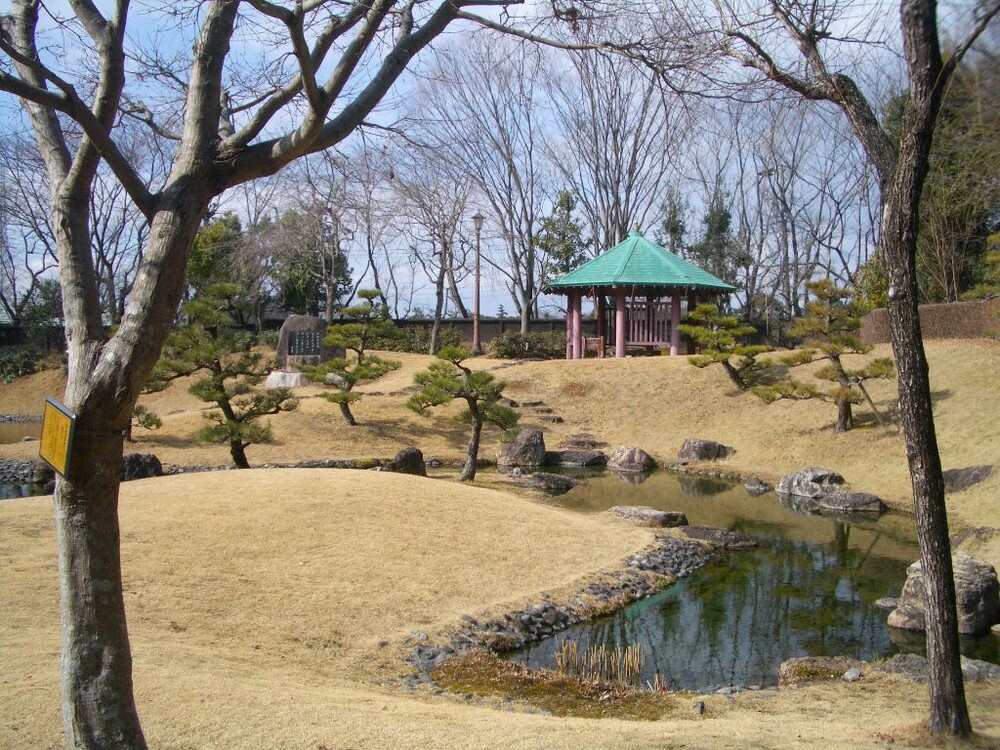
▲Kyokusui garden
Manyo-no-Mori Park, located in Hamakita Ward, Hamamatsu City, is a park rich in greenery centered around Manyo-no-Mori, where you can see about 300 types of plants written about in Japan’s oldest Japanese poetry collection, Manyoshu.
The waka poems included in the Manyoshu were composed approximately 1,200 to 1,300 years ago during the Asuka and Nara periods, and there are over 4,500 of them! Among these, there are four poems related to Hamakita, and only two or three are in the park, while stone monuments of all four are in Hamakita Ward.
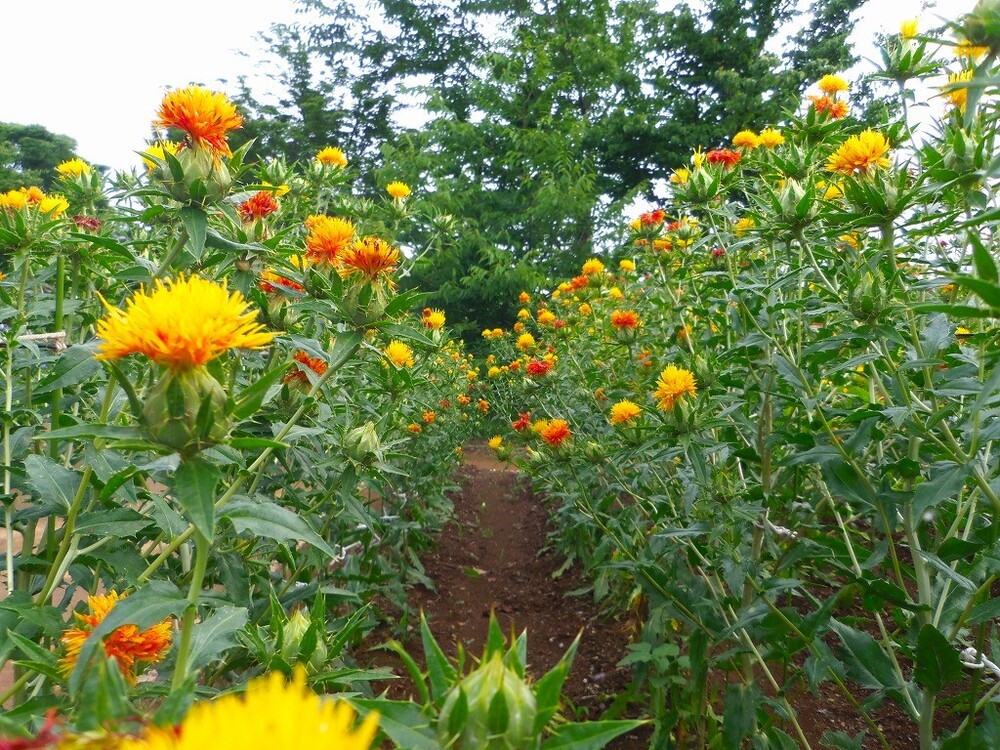
▲Safflower (photographed in June)
Inside the park, there is the Manyoshu Museum, which exhibits materials related to the Manyoshu and the lives of people who lived during the Manyoshu period (Asuka to Nara period), as well as experience facilities such as Kibabekibe’s workshop and Manyotei, and a song where water flows. There is also a water garden.
At Kibe’s workshop, you can enjoy dyeing with plants such as safflower, madder, and cherry blossoms. In 2021, Jenne Takahashi and Jenne Yusa had a safflower dyeing experience.
As you can see, the color of safflower flowers is bright yellow to deep orange. Are you curious about what color this flower will turn into?
[Shizuoka Prefecture/Hamamatsu Tourism] Plant dyeing in Hamakita, experience traditional dyeing techniques at Manyo no Mori Park!
「https://www.youtube.com/watch?v=peqbYglqJ2c」
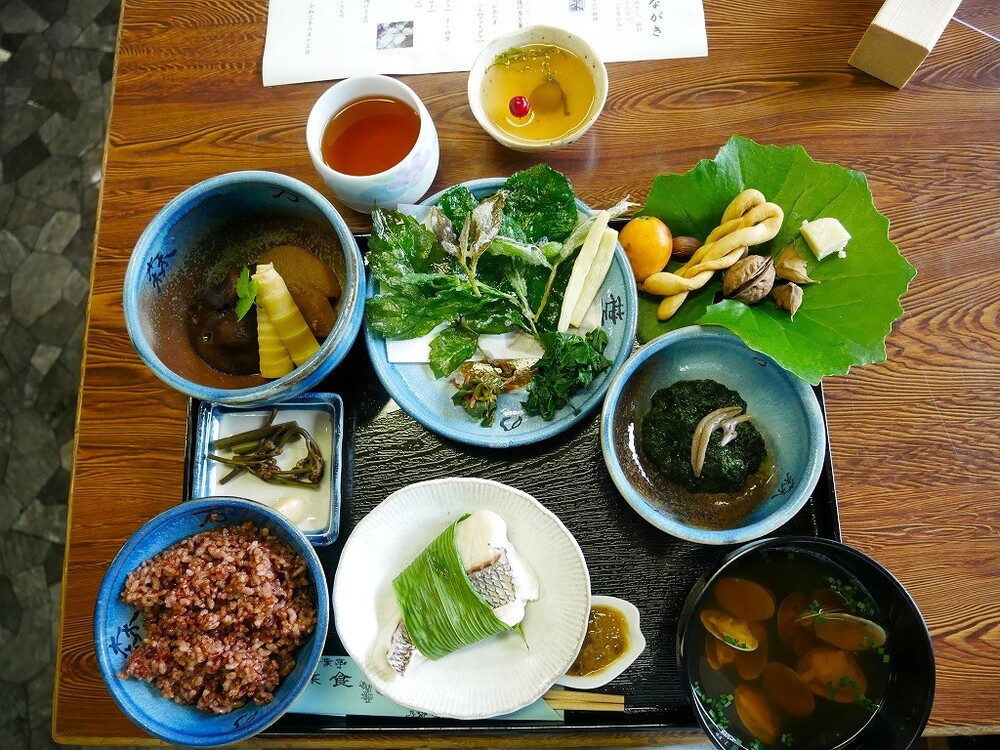
▲Manyoshoku “Early Summer Meal”
Manyotei, where you can enjoy Manyo food that recreates the food content of the Manyo period, is also popular.
The photo above is the “early summer meal” that I made at a Manyo food making workshop. We ate soso (an ancient cheese) made by boiling down milk, tempura of dayflower, and sea bream with soy sauce and vinegar, which is mentioned in the Manyoshu.
Jenne Takahashi and Jenne Saya make “Autumn Zen” and eat it! The situation at that time is being introduced on the YouTube channel “Jenne Channel”. Please take a look.
The Manyo food experience is being introduced on the YouTube channel “Jenne Channel” ▼
[Shizuoka Prefecture/Hamamatsu Tourism] I tried the ancient aristocratic meal “Manyoshoku” in Hamakita Ward!
Recreate the Tenpyo Emaki! Hamakita Manyo Festival
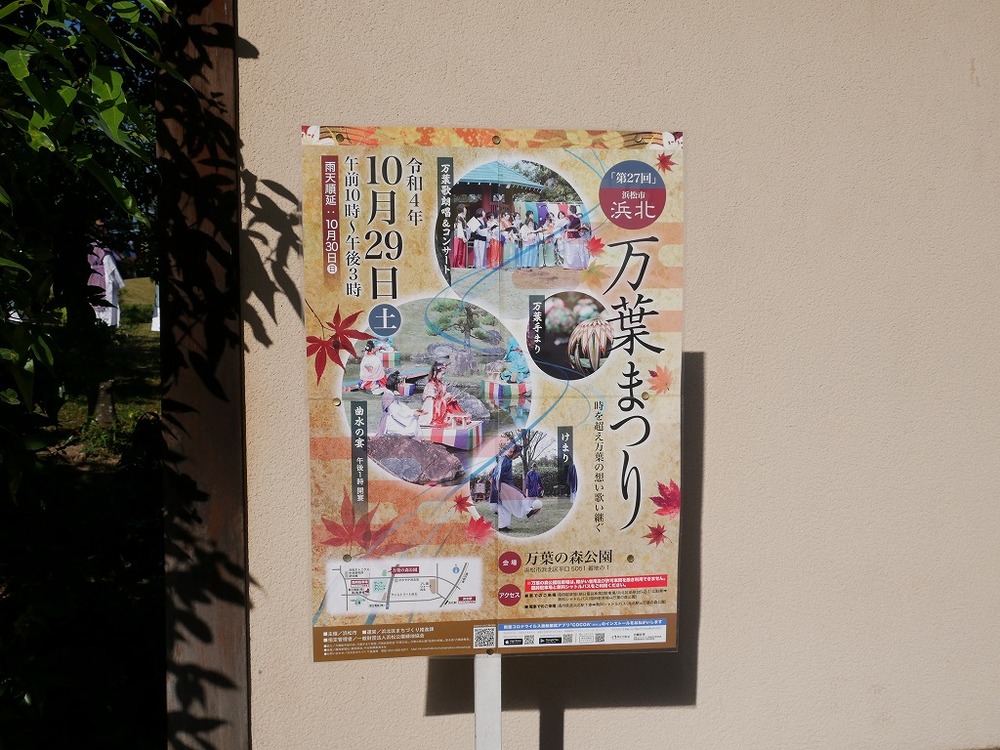
▲The 2022 Hamakita Manyo Festival will be held on October 29th (Saturday)
Some of you may be wondering, “By the way, what kind of festival is the Hamakita Manyo Festival?”
The Hamakita Manyoshu Festival is an event where you can get close to the era of the Manyoshu, wearing costumes from the Tenpyo period, the heyday of the Nara period, and reciting Manyoshu songs, talks, kemari performances, children’s Manyoshu concerts, and more.
The main feature of the festival is the Kyokusui Banquet, which was a spring court event for the aristocrats during the Nara and Heian periods.
Simply put, this is an event in which a sake cup is poured into a pond in a Kyokusui garden, and the participants sit on the edge of the pond and compose an impromptu song.It is held in autumn at Manyo-no-Mori Park in conjunction with the festival.
It’s a popular event because the Tenpyo Emaki is recreated up close.
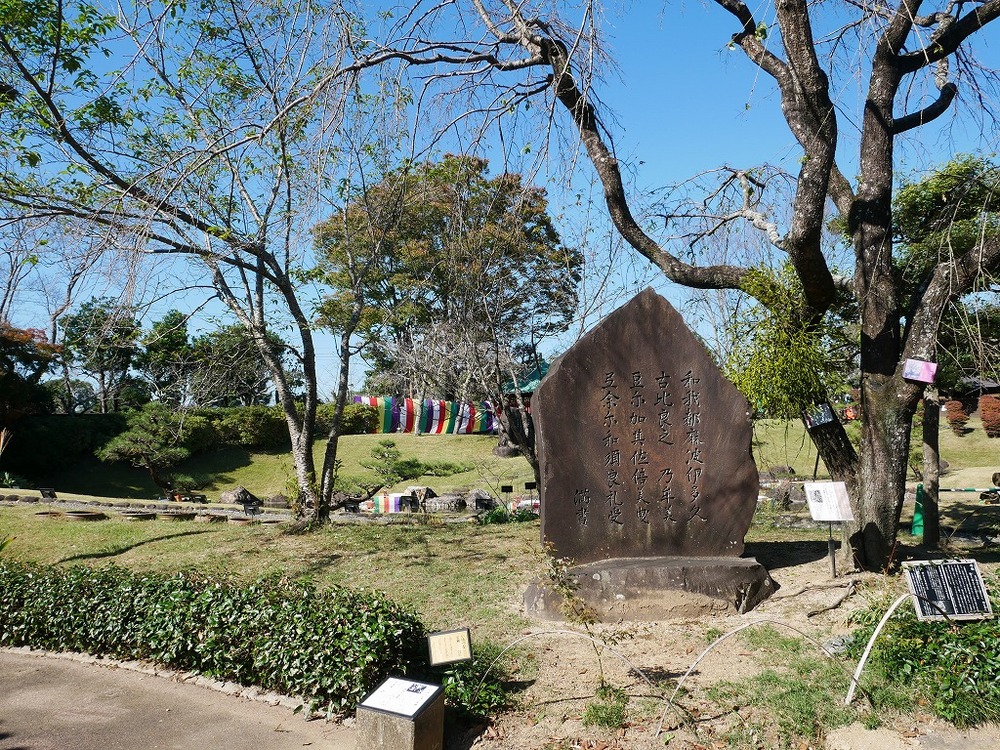
The Hamakita Manyo Festival will be held for the 27th time in 2022. This event has been going on since the days of Hamakita City, before it merged with the former Hamamatsu City. The weather on the day was clear and the five-colored ceremony curtain of purple, white, red, yellow and green stood out against the blue sky, making it a perfect day for the festival!
On the stone monument in front of the pond, one of the manyo poems associated with Hamakita is engraved in Manyogana.
“My wife is Hirashi Itaku Koi, looks in the shadow of the water she drinks, and is not forgotten by the world” (Wakayamatobe no Mimaro / Wakayamatobe Nomumaro) Volume 20-4322
This is a poem that the author composed while on his way to a post far away from his home as a guard sakimori in charge of guarding Kitakyushu.
There were also seats available at the edge of the pond for participants in the music festival. I’m looking forward to seeing where Jenne will sit.
Jenne transforms into an aristocrat from the Nara period!
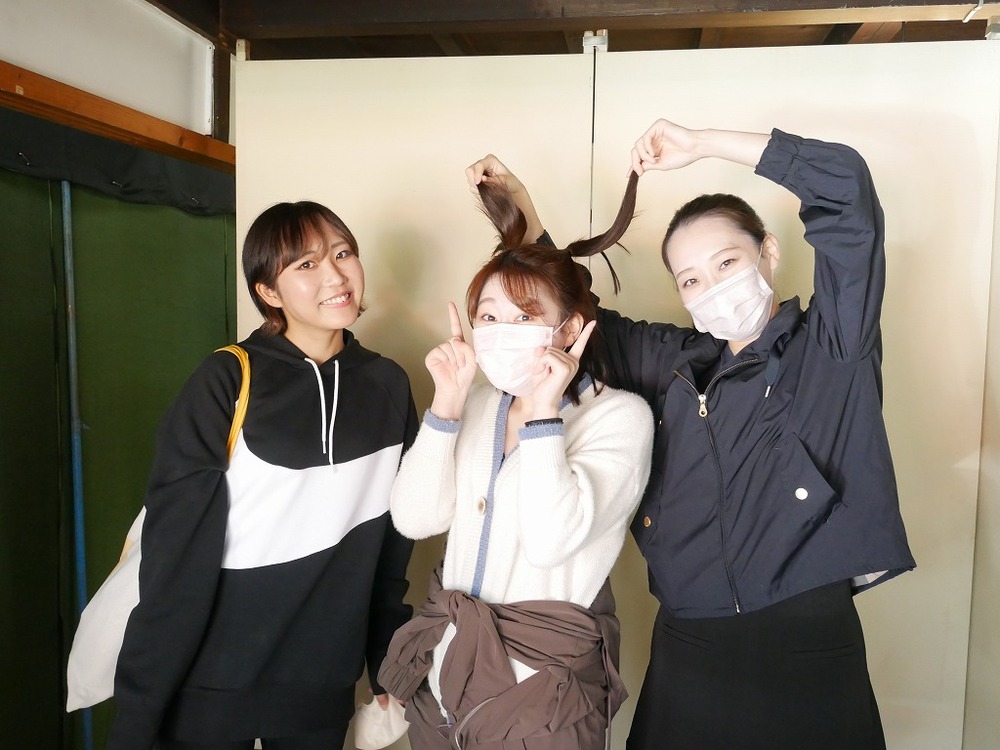
This time, the three sisters who will be transformed into Nara period aristocrats at the Hamakita Manyo Festival are sisters Saya Jenne, Wakana Jenne, and Anna Jenne. Wakana Jenne entered the waiting room with her hair tied in twin tails.
From here, we will introduce just a few scenes of Jenne and her friends changing clothes. What will the three of them look like? ?
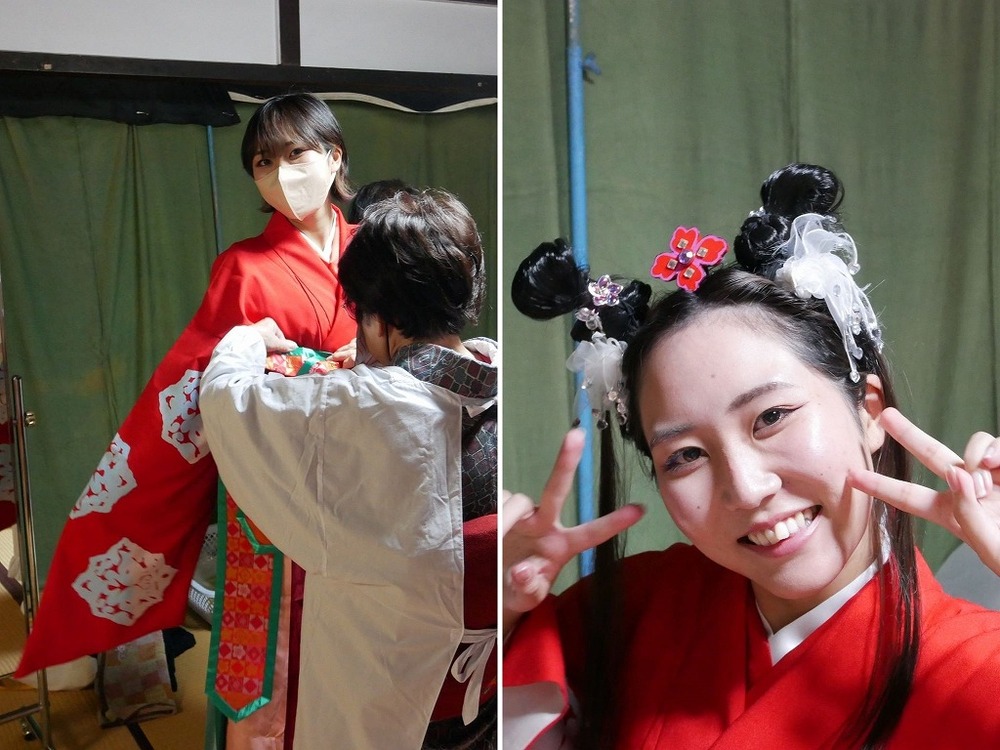
Let’s start with Saya Jenne.
Layer the outer garment Omotegi over the inner garment, put on a hakama, and then put on a skirt…not a kimono. The kimono is tied with a wide obi called a kasobari soeobi, with the ends of the obi hanging down on the left and right sides. The white pattern on the jacket is gorgeous.
Her hair is tied in two buns on top of her head. Saya Jenne’s charm is further enhanced with a different hairstyle than usual!
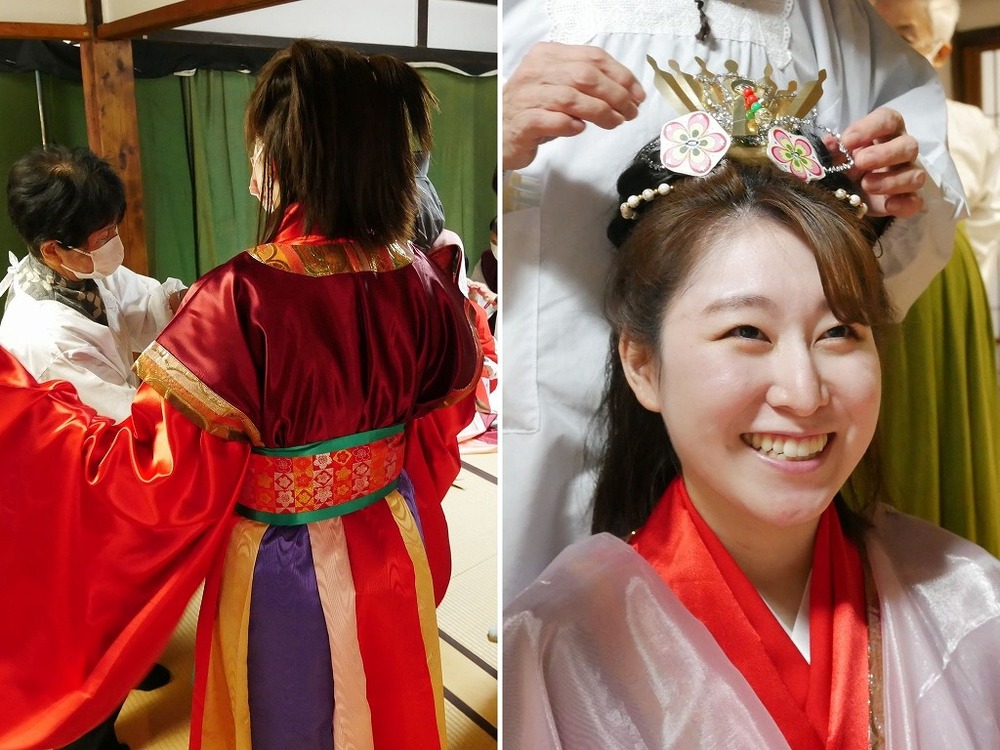
Next to Saya Jenne, Wakana Jenne was steadily changing her clothes.
A sleeveless kagaraginu is worn over the shiny outer garment, and the kimono is tied with a silk obi. Her hair was decorated with sparkling decorations and hair accessories made from peas.
Yeah, it’s cute.
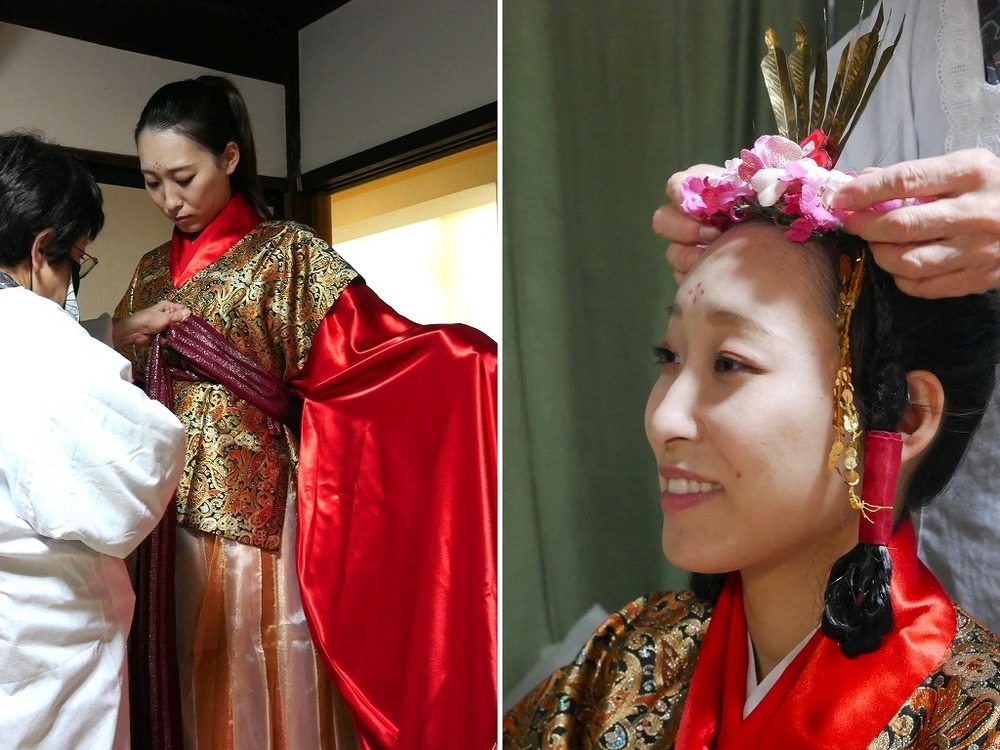
Anna Jenne changes clothes near the entrance of the waiting room.
It’s the same as Jenne Wakana, right down to the part where she wears the back on top of the shiny outer garment, but what? The pattern on the back is so gorgeous!
If you look closely, you can see that the texture and color pattern of the belts are also different. Does your hairstyle look calming somehow?
The reason is that the roles of the three characters are different.
“My sister is the Imperial Princess (a princess or sister of the Emperor who has been given the title of Imperial Princess), and I am a lady-in-waiting who serves her,” Wakana Jenne said.
Furthermore, even though they are the same ladies-in-waiting, the roles of Saya Jenne and Wakana Jenne seem to be different. Even though they are the same lady-in-waiting, their roles are different! ? It’s fun to see♪
A celestial maiden descends on Hamakita...!
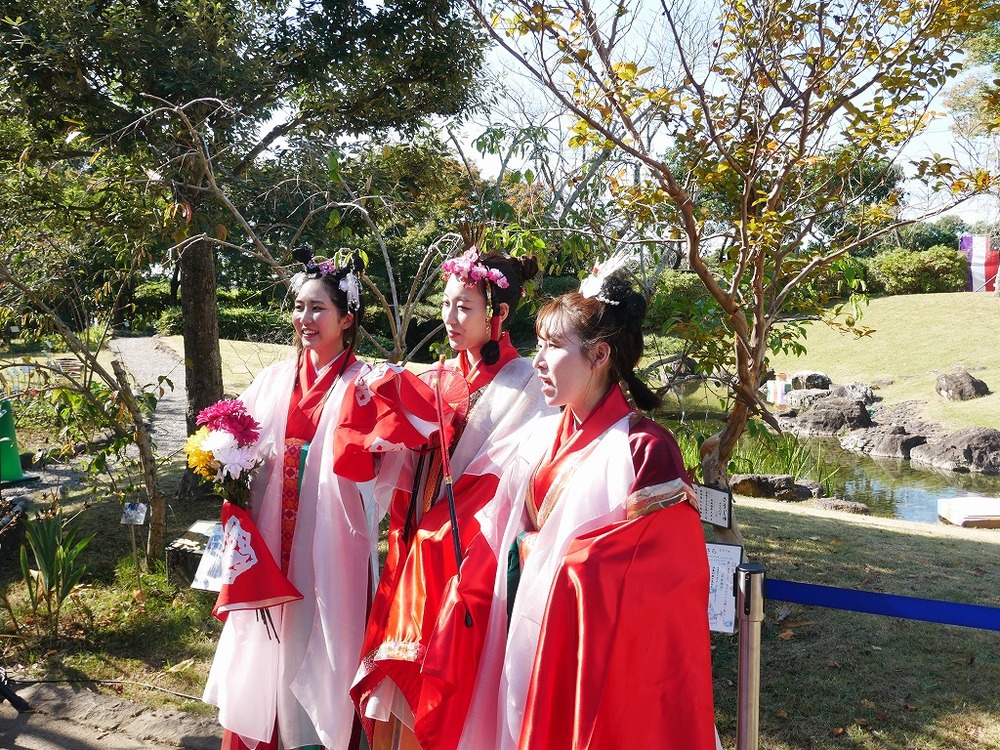
Sorry to have kept you waiting. Introducing three Jenne dressed in aristocratic costumes from the Nara period! !
In the autumn sunshine, Jenne and her friends look a mixture of nervousness and excitement. The three will perform at the Kyokusui Banquet and the recitation of Manyo songs that will follow.
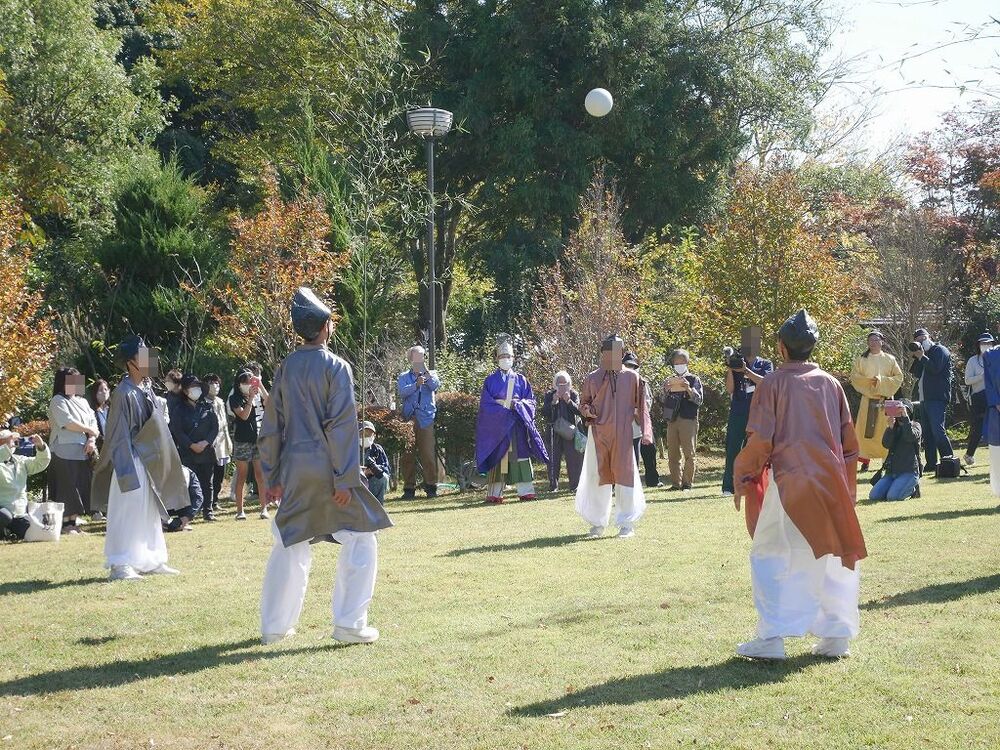
At the time Jenne appeared in the park, a kemari performance was being held in the multipurpose plaza by members of the local Hamana Junior High School soccer club.
The audience was overjoyed when they saw this. It must have been difficult because I was wearing different clothes and what I was kicking than usual.
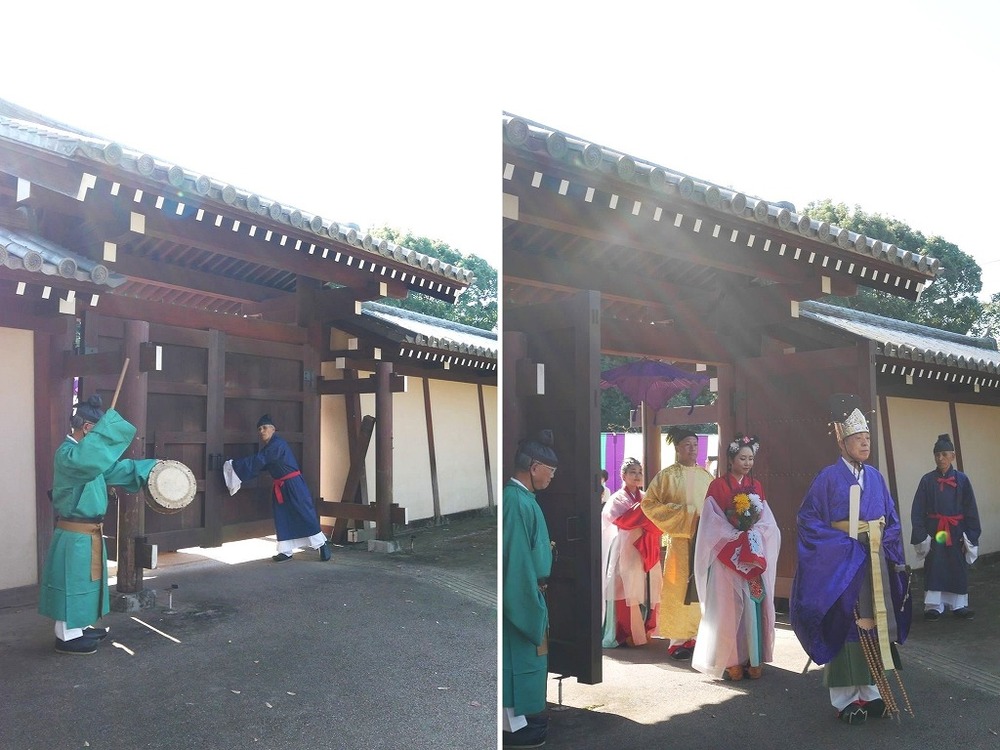
After the Kemari performance, it was time for the Kyokusui Banquet. At 1:00 p.m., the sound of drums sounded to signal the opening of the gates.
The person who walks at the front of the procession is the host of the banquet. And next was Saya Jenne with a flower in her hand. The person behind her in the yellow costume is playing the role of the Emperor, so even though she is a lady-in-waiting, Saya Jenne’s role is quite important.
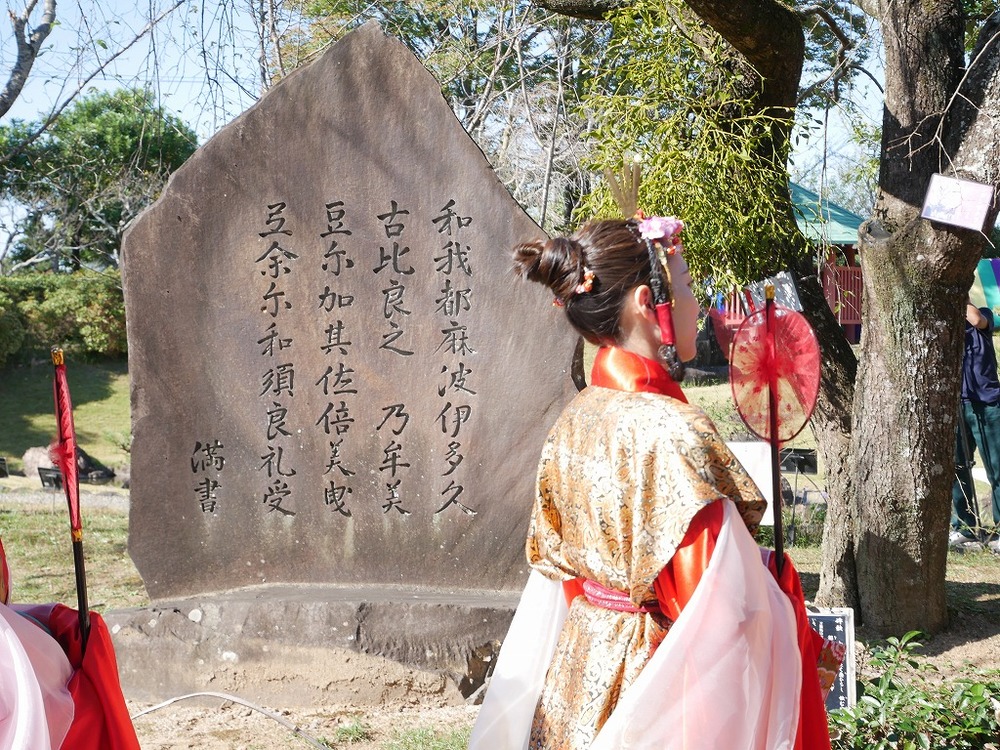
Following Anna Jenne, who plays the role of the Imperial Princess, is Wakana Jenne, who plays the role of a lady-in-waiting. I could feel the dignity of the Imperial Princess from the way she straightened her spine as she looked straight ahead of Anna-Jenne.
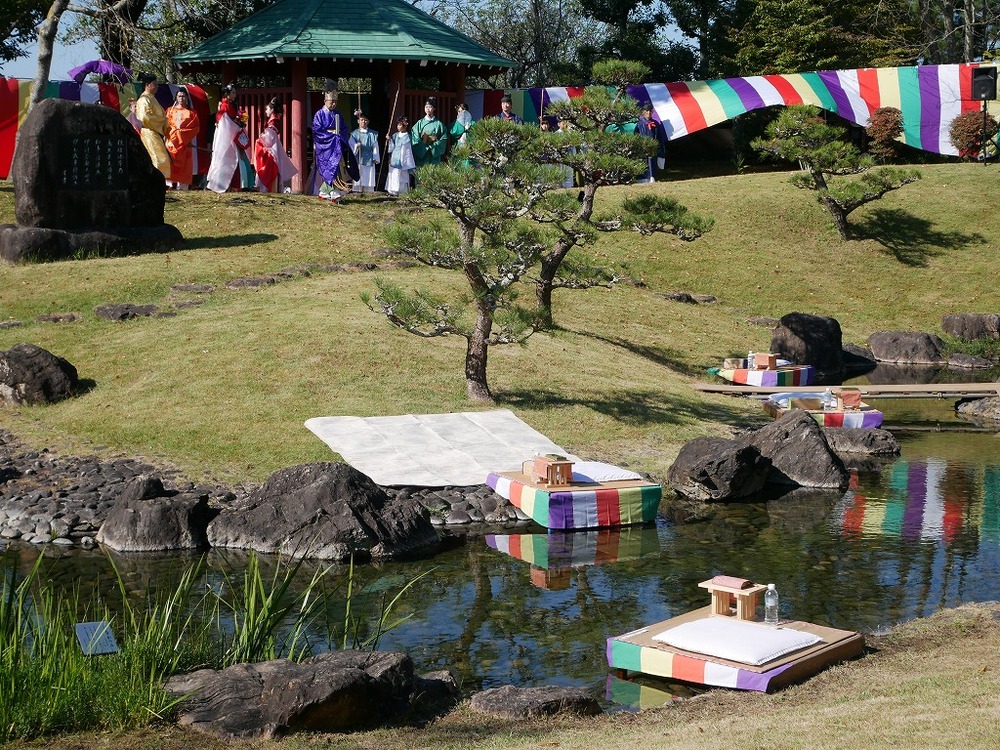
Attendees gathered in front of the Shia Azumaya and made their way to seats set up at the edge of the Kyokusui Garden. There are some seats that overhang more than half of the pond, but where will Jenne and the others sit?

▲Top left and top right: Anna Jenne and Wakana Jenne are seated next to each other, bottom left: Saya Jenne is in the far left corner, bottom right: the Sanka flowers scattered during the procession have characters for great luck!
Anna Jenne looked nervous about sitting down, but she seemed a little relieved, probably because she was sitting next to Wakana Jenne.
As for Saya Jenne, she was sitting next to the host at the far left when looking from the audience.
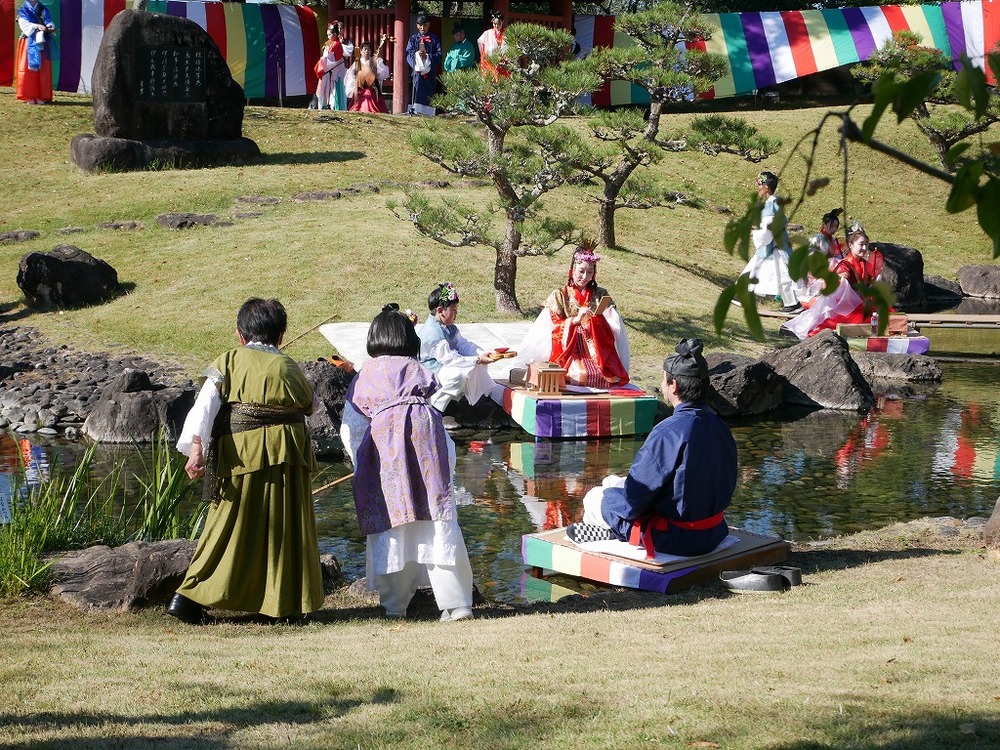
Once the performers dressed as poets from the Nara period have gathered, the Kyokusui Banquet begins.
The children who play the role of children use bamboo poles with metal fittings at the ends to pull the sake cups flowing from the host. The poems that have been composed will be recited by a staff member waiting in front of Shia-mae while playing the biwa.
Jenne had the audience laughing at the song she sang at this time (“I’m going to stop eating this cake, I want to eat it, I’m worried about my weight, autumn of appetite”)!
If you are wondering who that person is, please check out the YouTube channel “Jenne Channel”.
The YouTube channel “Jenne Channel” is introducing the Manyo Forest Festival▼
Travel back in time to the Nara period! Hamamatsu City Hamakita Manyo Festival – Challenge yourself to a music festival and recitation in an elegant manner!
「https://www.youtube.com/watch?v=0IUCzWeqgPo」
By the way, the remaining two people sang the song
“A seamless piece of sky is so blue that I just look up at the cosmos flowers.”
“It’s a party where we wear gorgeous costumes, and we forget about the world, and we are the Miyabito.”
It’s a song where the individuality of each of the three members shines through.
After the Kyokusui Banquet, recite Manyoka!
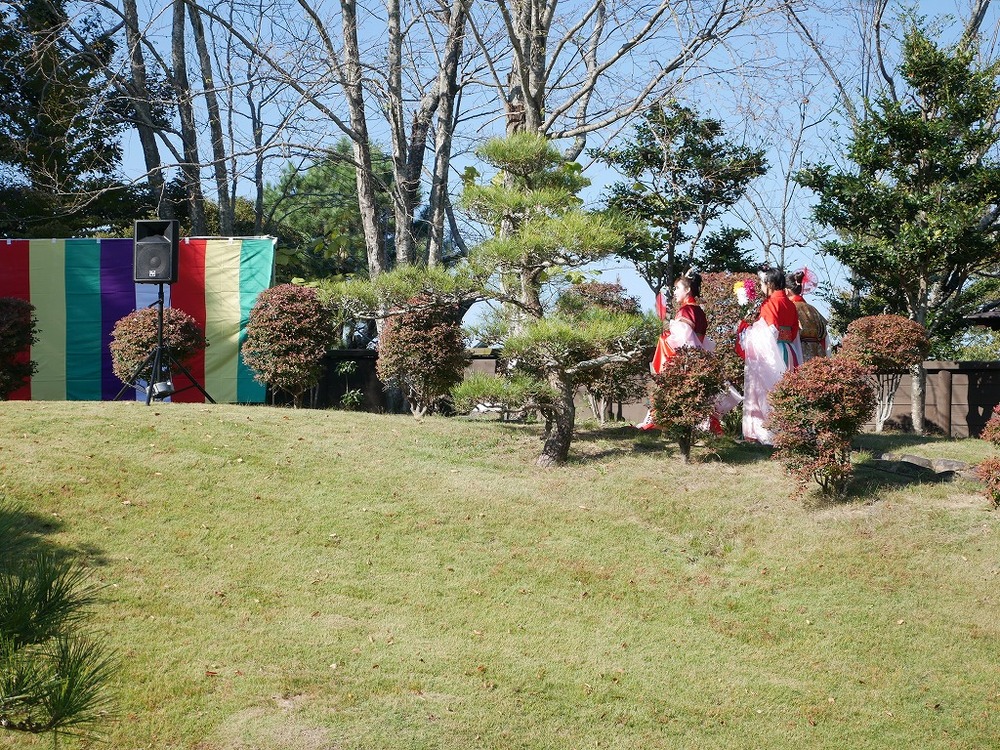
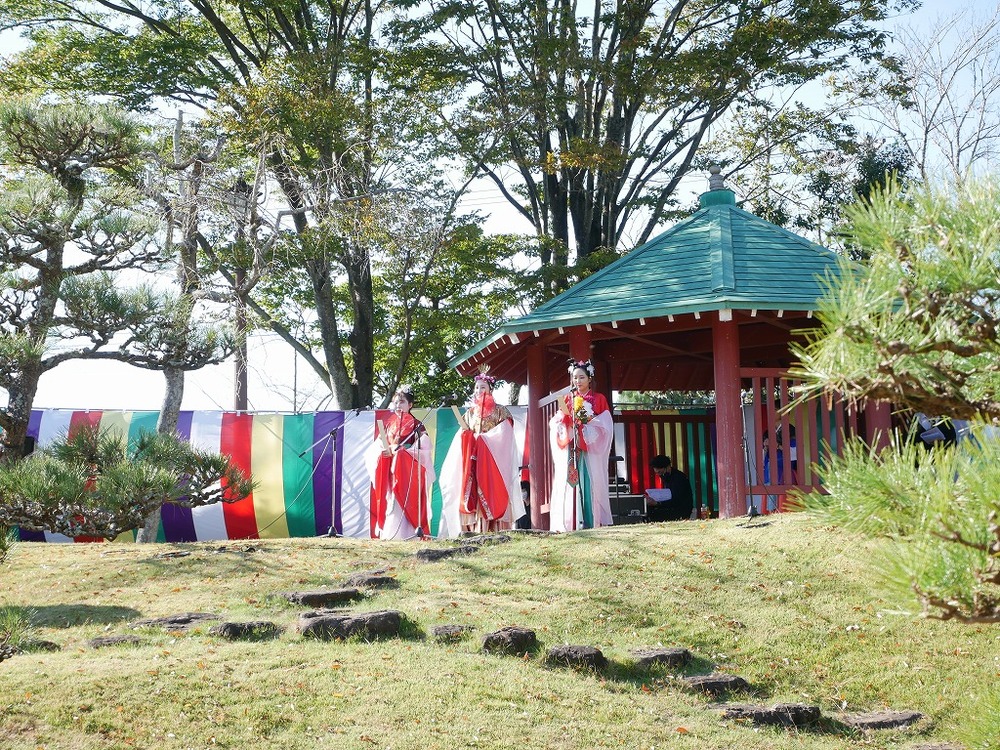
After the music festival, all the participants took a commemorative photo, and Jenne agreed to take a photo just for herself. Without any time to rest, they begin reciting Manyo songs starting at 2:00 p.m.
The recitation location is Shia-mae in Kyokusui Garden. The three of them each stood in front of the microphone and performed their prepared Manyo songs with smiles on their faces.
Her clear, resonant and calm voice is mesmerizing to listen to. I’m sure he practiced a lot.
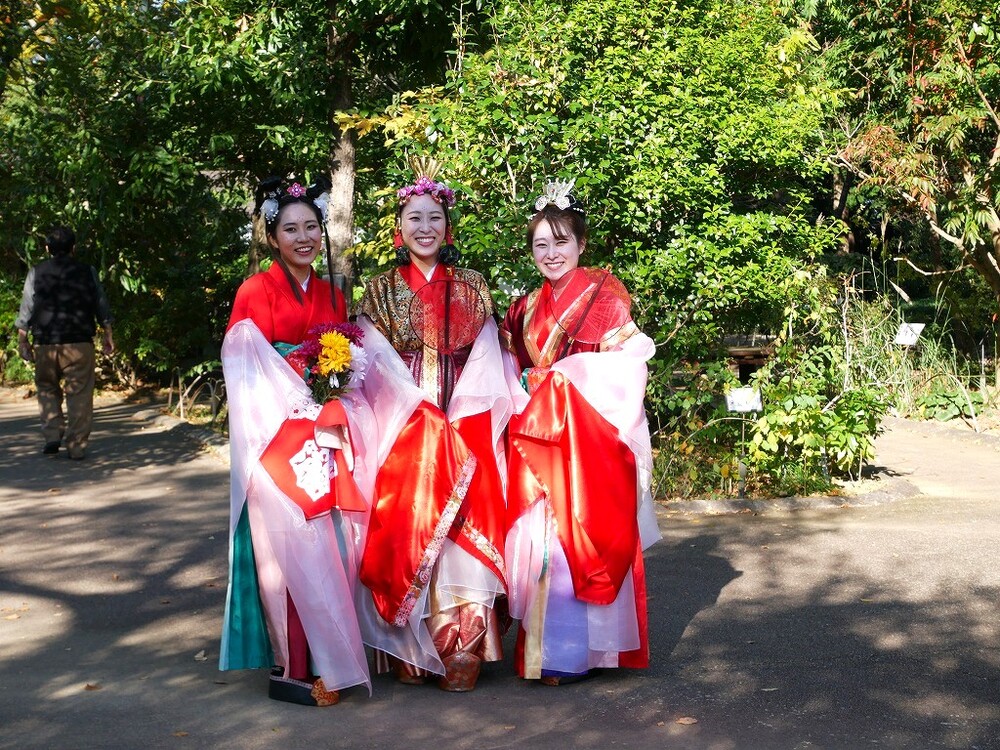
After all the performances were completed, Jenne smiled with relief.
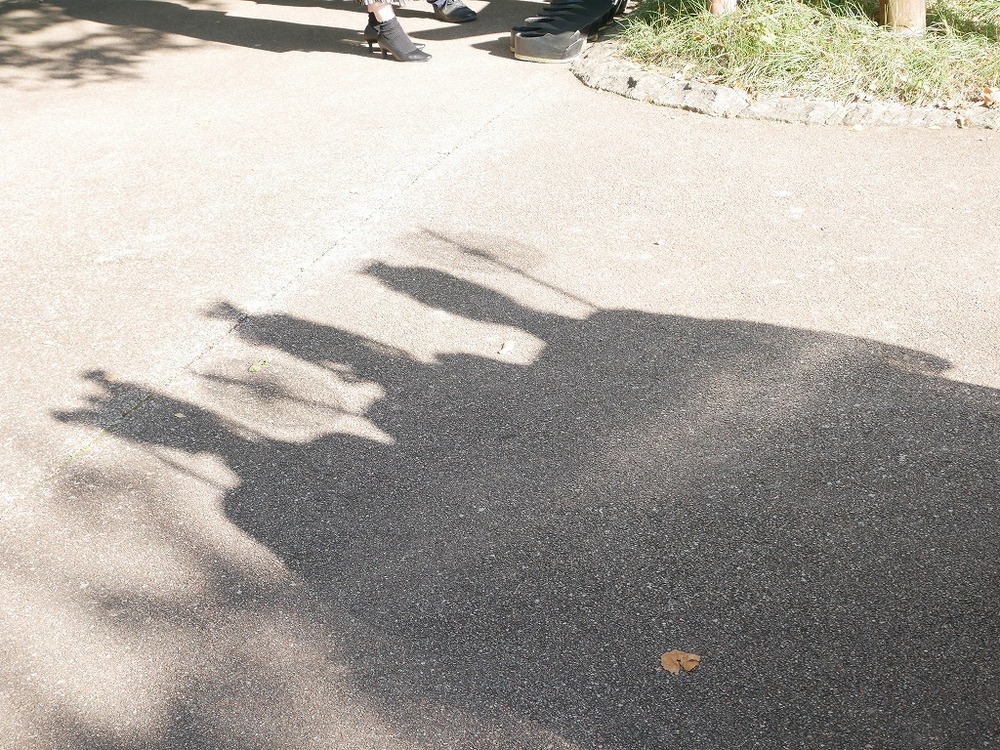
“Because it’s a great opportunity,” I took a commemorative photograph of my back and silhouette before heading back to the waiting room.

“I’m happy to be able to wear such a wonderful costume,” said Wakana Jenne. Saya Jenne, who was sitting next to her, said, “Even though I’m not a princess (because I play the role of a lady-in-waiting), I felt like one.” But she looks happy.
Yeah yeah. Both of you are so beautiful.
Anna Jenne, who plays the role of the Imperial Princess, said, “When the entire venue burst into laughter during the Kyokusui Banquet, I had to do my best to hold back my laughter.”
Yeah yeah. I think that song is a masterpiece that will go down in the history of the Hamakita Manyo Festival.
Thank you for your hard work, as you entered the venue in Nara period aristocratic costumes for nearly two hours, wearing clothes you were not used to. And thank you for letting the people who visited the Hamakita Manyo Festival feel the Nara period.
It was truly a feast for the eyes.
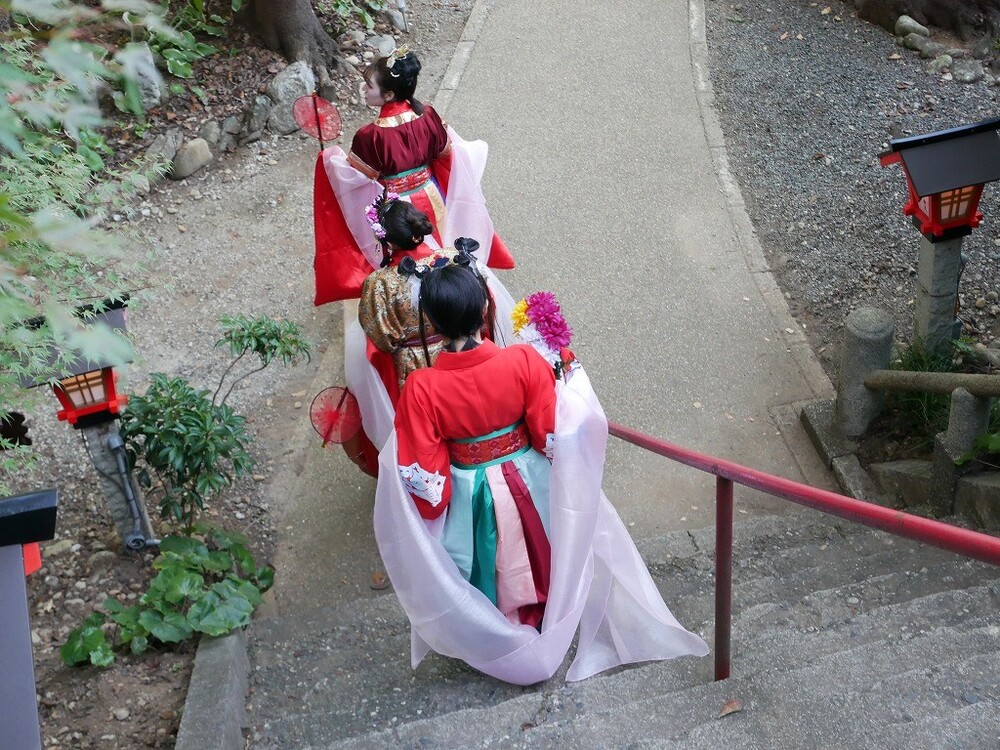
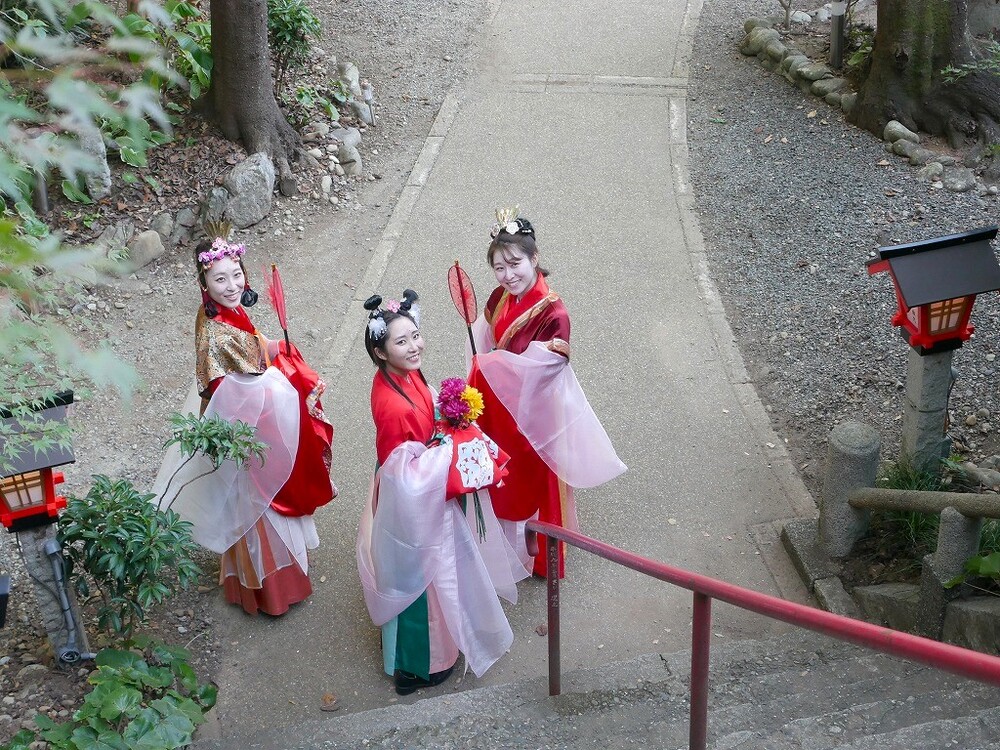
▲The three of them headed towards the waiting room and they noticed and turned around.
There are events all over the country that reenact Kyokusui no Ute, but most of them are held in costumes from the Heian period.
Kyokusui Banquets held in costumes from the Nara period are very rare.
Beautiful, beautiful, and glossy.
Be sure to take a look at the Tenpyo Emaki at the Hamakita Manyo Festival held at Manyo-no-Mori Park.
Manyōnomori Park official website (external link)
「https://www.hama-park.or.jp/f-kanri/f-manyo/manyo.html」
- Parking lot●
Normal opening time
・First parking lot: 40 regular cars, 5 buses
・Second parking lot: 20 regular cars (Fudoji Shita)
*During the Hamakita Manyo Festival, it cannot be used except for people with disabilities and licensed vehicles.
Please use the free shuttle bus from the temporary parking lot.
[Bus time required]
・From Entetsu Hamakita Station to Manyo-no-Mori Park (via temporary parking lot): Approximately 15 minutes
・From the temporary parking lot to Manyo-no-Mori Park: Approximately 5 minutes
Interview date: 2022.10.29
